Studying eagles along the lower Susquehanna (Conowingo)
Reproductive effort of red-cockaded woodpeckers at Piney Grove a result of age before beauty
July 13, 2010Adult Poses Below Camera
July 14, 2010
Written by Bryan Watts & Elizabeth Mojica
July 14, 2010
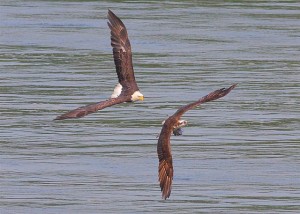
A remarkable chase scene of an adult bald eagle in pursuit of an osprey carrying a fish at Conowingo Dam. Photo by Steve Dale.
The lower Susquehanna River supports one of the most spectacular concentrations of bald eagles found anywhere along the Atlantic Coast. Its waters support several power generating stations including Exelon Corporation’s Muddy Run Hydroelectric Station, Peach Bottom Atomic Power Plant, and Conowingo Hydroelectric Station. Birds converge on this area, particularly in the winter months, to take advantage of fish that are stunned in the outfall of the hydroelectric dams.
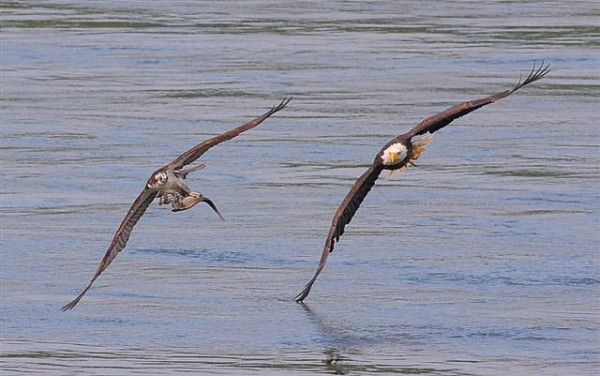
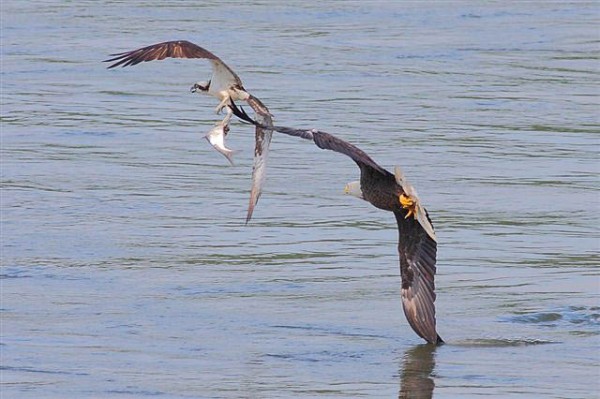
A remarkable chase scene of an adult bald eagle in pursuit of an osprey carrying a fish at Conowingo Dam. Photo by Steve Dale.
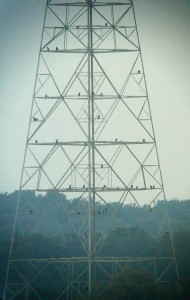
More than 30 bald eagles roosting on the transmission tower on Muddy Run Reservoir, above Conowingo Dam. Photo by Libby Mojica.
Bald eagles fitted with satellite transmitters have been tracked over the past 3 years as part of a multi-partner effort to understand the spatial ecology of bald eagles in the upper Chesapeake Bay. Night positions have been used to delineate more than 140 communal roosts within the upper Chesapeake, including more than 35 along the lower Susquehanna River. However, we do not yet know how the number of transmittered birds using a roost relates to the overall size of a roost. Ground observations covering a range of roost sizes are needed to form this relationship.
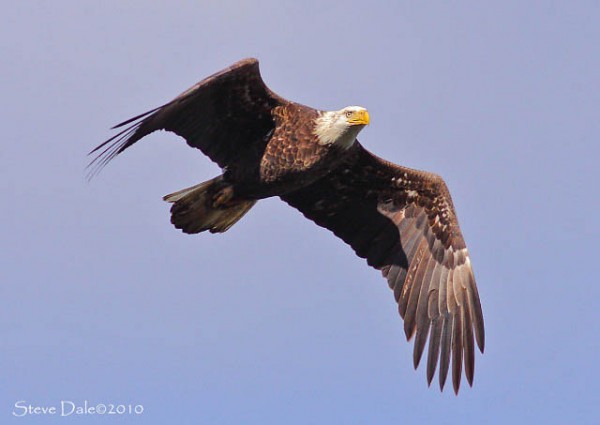
An adult bald eagle flies above the Susquehanna River. Photo by Steve Dale.

The Center for Conservation Biology research assistant, Beth Dzula surveys for bald eagles along the Susquehanna. Photo by Bart Paxton.
Robert Lin spotted and photographed a satellite transmittered eagle soaring above Conowingo Dam.
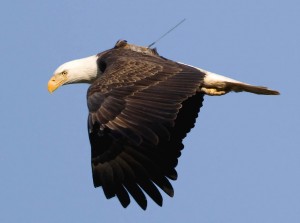
This Center for Conservation Biology satellite-tagged bald eagle was resighted by a local wildlife photographer at Conowingo Dam along the Susquehanna River in MD. Photo by Robert Lin.
In early 2010, CCB joined forces with Exelon Corporation to investigate the importance of the lower Susquehanna for eagles. A nest survey was flown to document nesting pairs and to assess productivity. The effort will also evaluate the relationship between birds with transmitters and overall roost size. Such information will help to interpret roost sites along the Susquehanna and throughout the region. One round of roost surveys was conducted in the summer of 2010. Work will continue this winter with an additional 10 weeks of winter roost monitoring scheduled for early 2011.
Project sponsored by the Center for Conservation Biology (CCB), Exelon Corporation.



